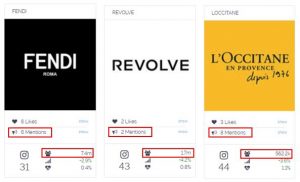Blindly picking the most popular keyphrases might help your site get some attention and boost your ‘locker-room metrics‘, but it won’t bring in viable prospects who are ready to hand over their credit card information.
In other words, traffic alone has no worth; it must be relevant (or valuable) traffic.
That’s where this article comes in. Weighing your research and decisions against the 15 factors you’ll find below will help you successfully pick keywords that will build your business (not just your traffic).
We’ve split them over the three primary decision-making criteria to make them easier to browse through.
Decision #1: The Potential Search Volume or Demand
First and foremost, is anybody actually searching for your keyphrase ideas? Here’s how to find out.
1. Performance In Ppc Tests
It’s difficult to know which keyphrases in your industry are going to be popular, especially if you’re just starting out. One of the fastest ways to discover the most profitable keyphrases is by running PPC tests.
For example, you might initially get started with a huge list of topics to describe your products. Many sound nice in theory, but without actually testing, you’ll have no idea if they’re going to send you valuable traffic.
Using Google AdWords or Microsoft Bing Ads, you can run tests across potential keyphrases or topics and determine which are your best prospects to target for organic search.
Best of all, this doesn’t have to cost you anything. You can often find free advertising coupons through offers from related tools (like your domain registrar or hosting provider), or other reputable sites like SEO Book.
2. Scalable Keyword Groupings
Once you’ve begun identifying a few popular phrases, it’s worth considering if they’re part of a larger, ‘scalable’ group of keywords that you can eventually begin expanding your site’s content around.
With the above in mind, creating ‘hub pages‘ of contextually-related content is a great on-site SEO tactic, because you’re significantly increasing the relevancy (and freshness) of your site’s ‘authority’ on a particular topic.
3. Trending Topics
Most of the popular ‘commercial’ phrases in your industry are no doubt already extremely competitive. However, you can capitalize on trending topics that get a ton of instant attention (and usually have lower competition).
Many times these trending topics won’t show any search demand or volume in traditional keyword research tools, but you can head over to Google Trends to see how it’s trending.
You can also use this to plan ahead of a major event (like EURO 2016). The Google Trends graph below shows how this topic has become increasingly popular over the past few months, especially recently as the team groups and schedule were released.
![clip_image002[4] clip_image002[4]](http://www.searchenginepeople.com/wp-content/uploads/2016/01/clip_image0024.jpg)
Beyond Google Trends, there’s also Moz’s Fresh Web Explorer, which helps surface all mentions of a particular topic within the last few weeks (while also providing a scale so you can see how this topic is trending over time).
![clip_image004[4] clip_image004[4]](http://www.searchenginepeople.com/wp-content/uploads/2016/01/clip_image0044.jpg)
4. Location
Everyone’s search results are personalized based on their (a) past browsing history, (b) social media connections, and (c) physical location.
That means if you search for “movie theaters”, the search results you see are going to be very specific to your location, while someone searching for the same phrase in another location will get completely different results.
Not only will the SERP (Search Engine Result Page) results and order be different, the overall search volume will also be specific to each location.
Until recently, search results for different locations could have been checked both in Google and a variety of local rank checking tools. However, Google dropped change location search filter, and local rank checks became unavailable in the majority of rank checking tools as well. As a solution to the problem, we’ve lately updated Rank Tracker with checking local rankings based on the exact GPS location.
5. Branded Keyphrases
Branded keyphrases are those which you ‘own’, as opposed to non-branded ones, which tend to be more commercial in nature.
For example, “New Balance Minimus” is a branded keyphrase, whereas “minimal running shoe” is a non-branded keyphrase.
Making sure that you’re showing up for your all branded terms isn’t just good practice; it also helps with reputation management. By flooding the top results for your own brand terms, you’re able to push out or keep away unwanted negative feedback or other potentially harmful reviews.
Here is what shows up when you type “New Balance Minimus” into Google:
![clip_image006[4] clip_image006[4]](http://www.searchenginepeople.com/wp-content/uploads/2016/01/clip_image0064.jpg)
The first six search results (three paid, three organic) are direct links to buying pages. Not only that, but they also boast 4+ star reviews.
On the other hand, here’s what shows up when you type “minimalist running shoe”:
![clip_image008[4] clip_image008[4]](http://www.searchenginepeople.com/wp-content/uploads/2016/01/clip_image0084.jpg)
While there are links to sites where minimalist running shoes can be bought, a brand has less control over direct product links and the types of reviews being left. Case-in-point: the Google Shopping bar does have the New Balance Minimus shoe listed, but it only received 2½ stars.
The above aside, you can also use branded terms to popularize a specific concept. One of the best examples is “inbound marketing” from HubSpot, which has become a household phrase in marketing circles.
Decision #2: The Competition Already Ranking
Even if a keyword has a lot of demand, your chances of ranking for it can be severely limited by the competition.
6. Keyword Difficulty
Finding keywords with high volume estimates is a good first step. However, the key to seeing if a high keyword is going to be valuable is to take a look at the competition and see if you have any chance of ranking (in the short and/or long term).
The Keyword Difficulty Score on Rank Tracker can give you a good idea of your chances by providing difficulty estimates and ranges based on relative volume.
![clip_image010[4] clip_image010[4]](http://www.searchenginepeople.com/wp-content/uploads/2016/01/clip_image0104.jpg)
7. SERP Difficulty
Moz has a similar Keyword Difficulty Tool that will give you a quick breakdown of what the competition looks like and how your own site might compare.
By looking at a few basic off-site SEO metrics, you can analyze the relative strength of websites currently showing up on top SERPs for each major keyphrase. Then you can compare your own site’s strength to see if these websites are ripe for a challenge, or if you’re nowhere close.
![clip_image012[4] clip_image012[4]](http://www.searchenginepeople.com/wp-content/uploads/2016/01/clip_image0124.jpg)
8. Budget And Timeframe
Depending on keyword difficulty and SERP difficulty, you need to make a determination of how badly you want to compete for that keyphrase.
Should you try to stick it out and compete for large, difficult and complex (but super popular) keyphrases, or instead go after smaller, easier-to-reach long tail ones?
There’s no right or wrong answer, necessarily. The decision typically comes down to your own budget (i.e. how much are you willing to invest), and timeline (i.e. how long are you willing to wait).
Sometimes, it’s worth waiting a few months (or even years) and working away to establish a prominent position for a top industry keyphrase. However, many times it’s also fine to simply go in a different direction and look for a long tail phrase that’s going to be a little easier to compete for.
9. Competitive Campaigns
If your business is seasonal or cyclical and has certain times of the year where the entire competitive landscape is running campaigns, you can ‘spy’ on the competition to get a feel for what topics they’re targeting.
Using Moz Pro you can pull up their past campaigns to get a feel for what they’re optimizing for and which sites have linked to them.
![clip_image014[4] clip_image014[4]](http://www.searchenginepeople.com/wp-content/uploads/2016/01/clip_image0144.jpg)
10. Competitive Link Profiles
Analyzing your competition’s moves for a single campaign is helpful. However, you can take this to the next step by looking at the entire ‘link profile’ of your competition’s website to get an understanding of who’s currently linking to them.
This is a great way to reverse engineer their success. For example, you’ll quickly get an understanding of the types of links they’ve earned so far (e.g. editorial based, directories, etc.) to see what you need to do to see similar success.
You can also use this information to go out and target the same sources for particular keyphrases. For example, if you have a new product launch, you can use your competitor’s link profile to help you figure out where they were able to get reviews and go pitch the same bloggers or journalists.
Decision #3: The Searcher’s Intent
Last but by no means least, you need to take into account why people are searching.
11. Expected Visits
The most popular keyword in the world isn’t going to help you if (a) you can’t rank for it, or (b) the searcher hits your site and has no interest in what you’re offering.
The Keyword Efficiency Tool in Rank Tracker can help you determine not only potential volume and competition, but also dive deeper into expected visits.
![clip_image016[4] clip_image016[4]](http://www.searchenginepeople.com/wp-content/uploads/2016/01/clip_image0164.jpg)
12. On-site Search
Chances are, visitors to your website are already looking for specific things that may (or may not) exist.
You can analyze the user behavior of visitors already using your site by looking at internal site search data. Tracking this information also helps you uncover the exact wording or phrasing a customer might use, which typically matches what they’re going to type into Google.
13. Top Of The Funnel Visitors
People at the top of the ‘funnel’ aren’t even aware they have a need for your product or service yet.
Instead, these people are mostly interested in education, or some other topic-focused information (usually to solve a problem).
These guys need to be served with the appropriate content.
14. Middle Of The Funnel Visitors
People in the ‘evaluation’ stage are researching their options and looking at alternatives in a specific area or category.
For example, if you were researching vacations, at this step you’ve probably narrowed it down to a specific place, so you might look for “hotels in New York City” (or perhaps even a specific neighborhood).
When evaluating, you’re looking for differentiating factors – such as comparisons and reviews – between “providers”, a “tool”, etc.
15. Bottom Of The Funnel Visitors
Once people are in the “Decision” stage, they’re ready to take action.
These people are going to choose. They are ready to purchase or are at least interested in getting last-minute, specific help.
Here, you’re looking for “pricing” and more in-depth details that will help you ultimately purchase.
Conclusion
Keyphrases shouldn’t be chosen at random, based on what might be popular; they should be weighed against a set of key criteria that will help you judge every angle.
The best keyphrases need to be balanced and analyzed based on (a) expected volume, (b) competition, and (c) where a searcher might be in the ‘buying cycle‘. Broaden your decision-making to incorporate all of the 15 factors above and you’ll reap the rewards of a more focused approach before long.
How have you found the best keyphrases for your business? Let us know in the comments below!
Hand-Picked Related Articles:
- 10 Types of Buying Signals Found in Keyword Queries & How They Accelerate SEO Results
- 5 Untapped Sources of Keyword Ideas
- How To Use Landing Pages In Google Analytics To Find Keywords
* Lead image adapted from jah~
15 Factors to Consider When Prioritizing Which Keywords to Target
The post 15 Factors to Consider When Prioritizing Which Keywords to Target appeared first on Search Engine People Blog.
(63)
Report Post








